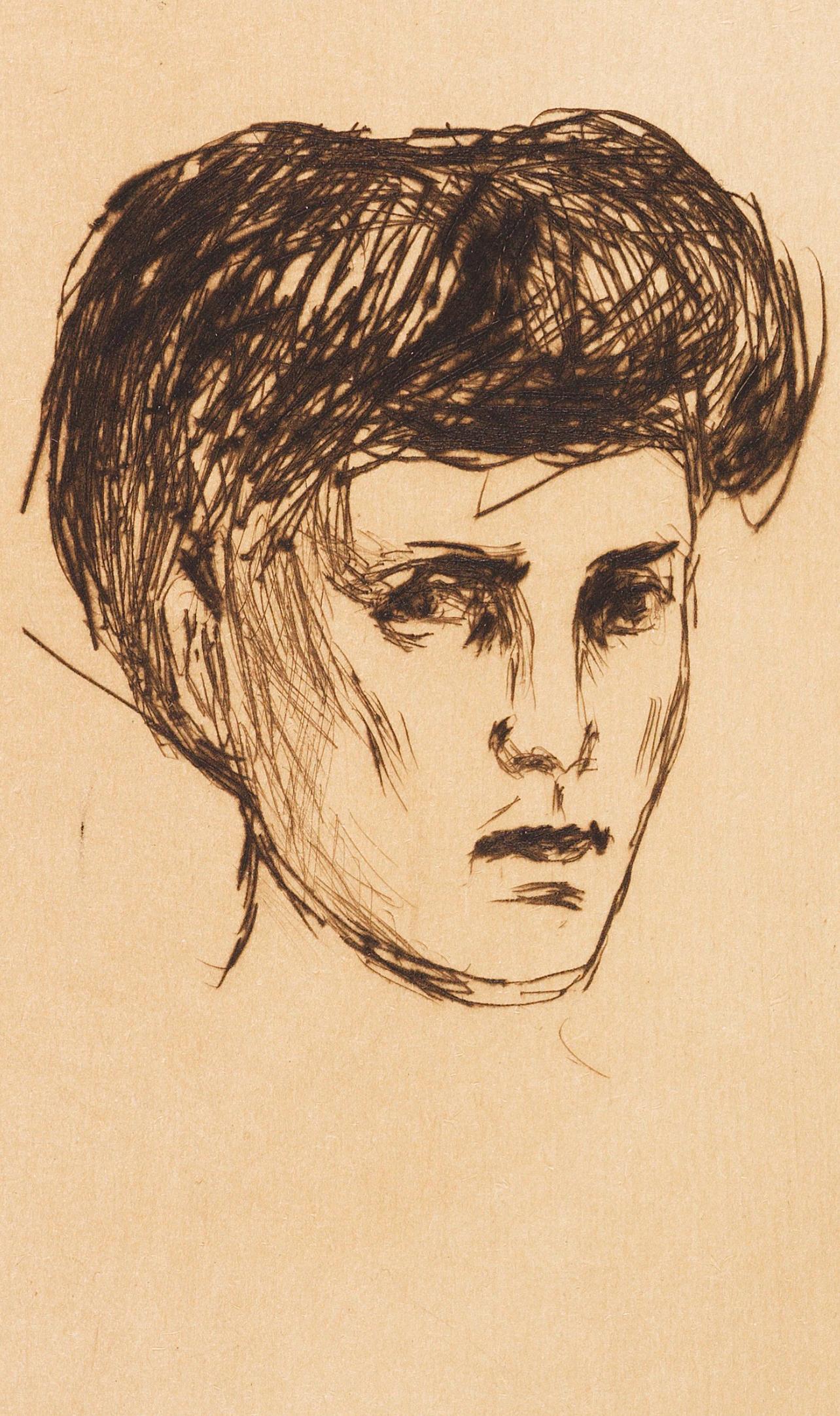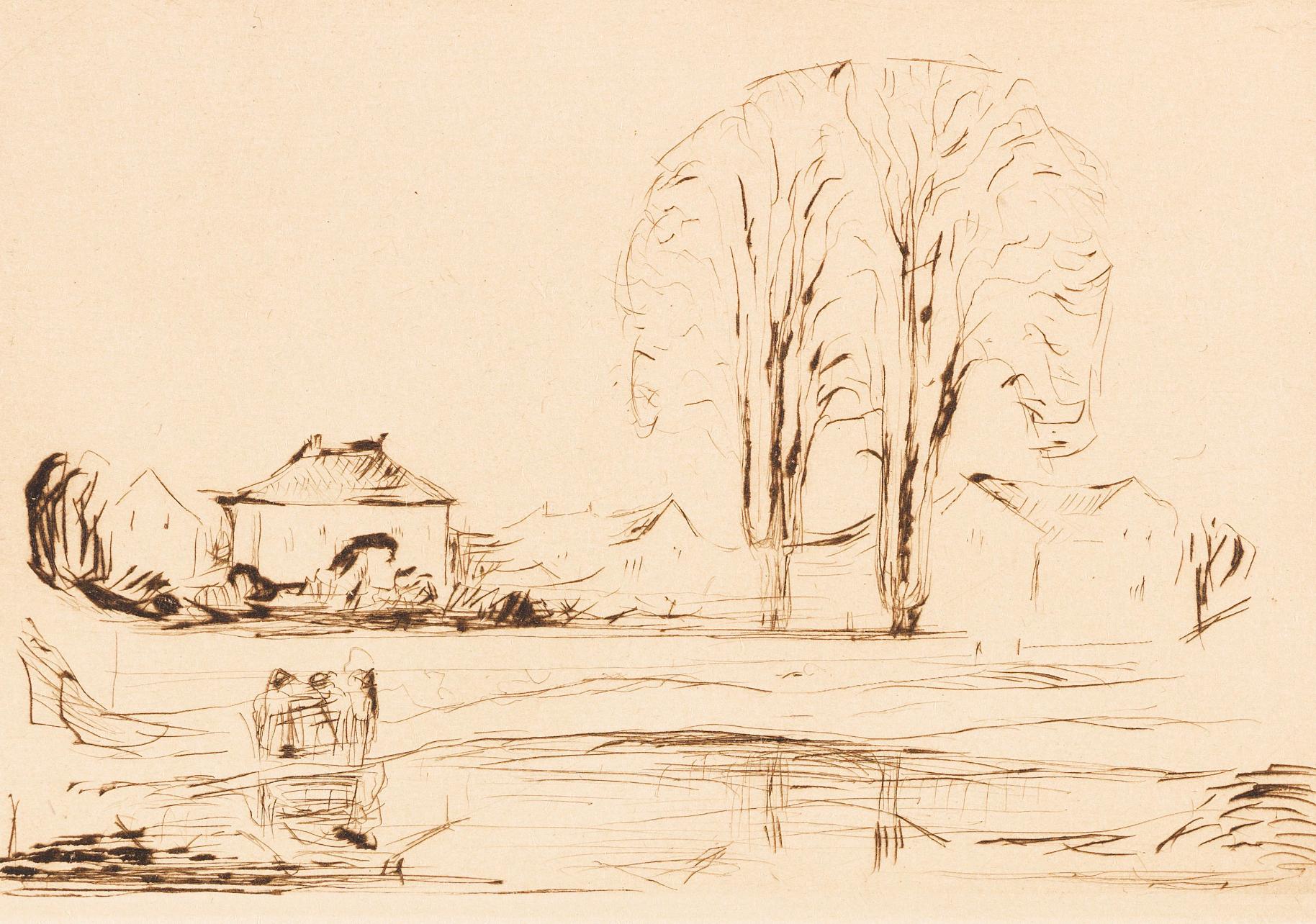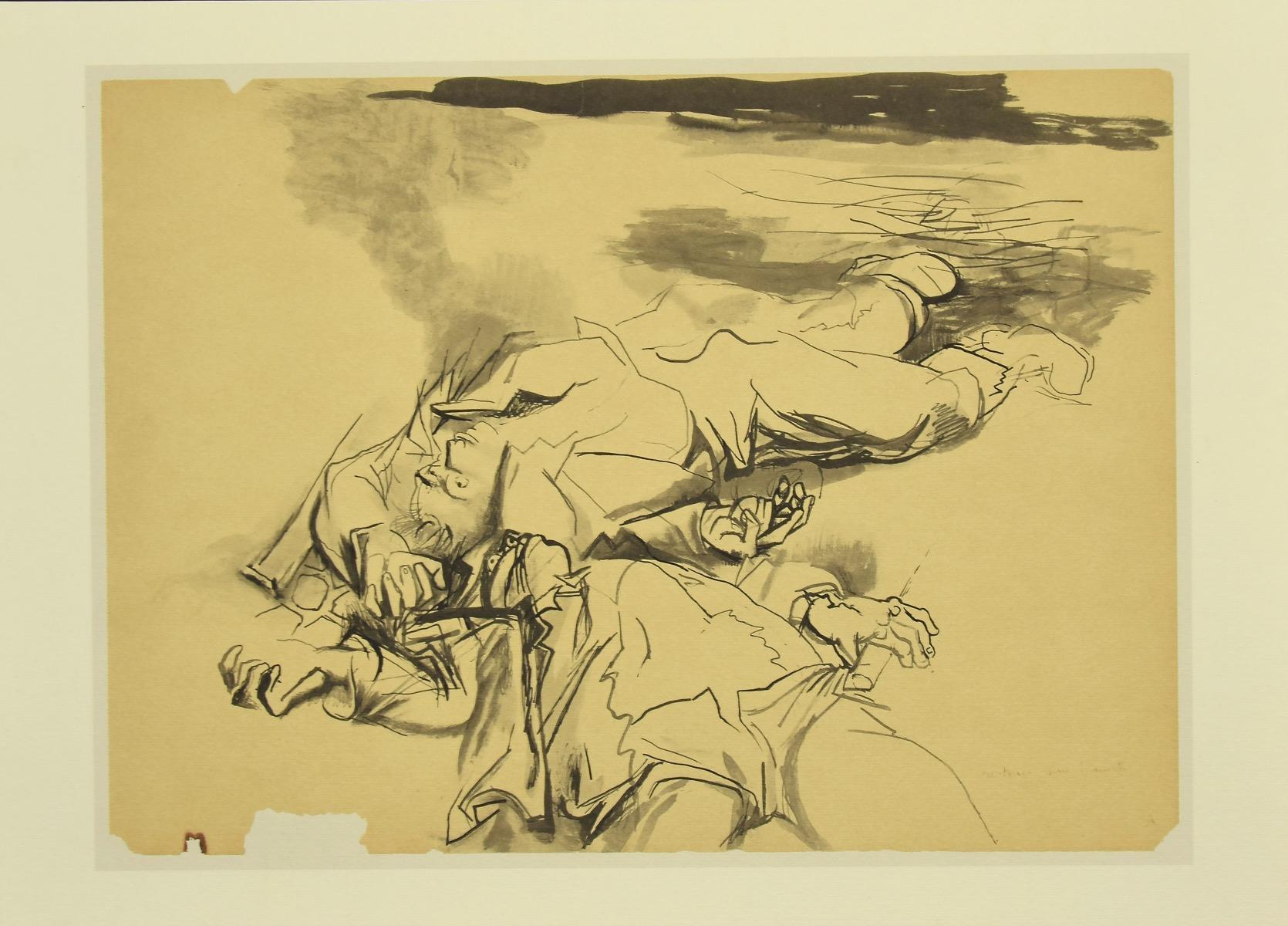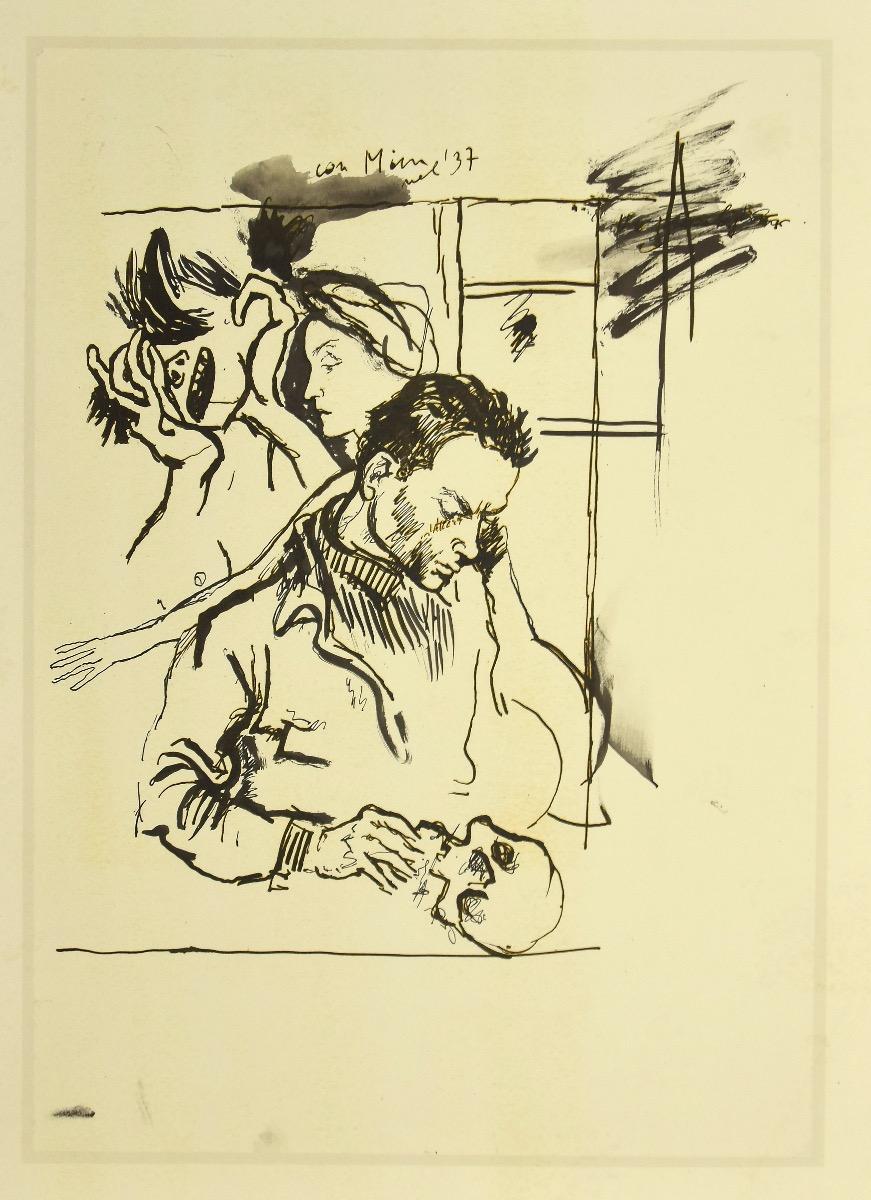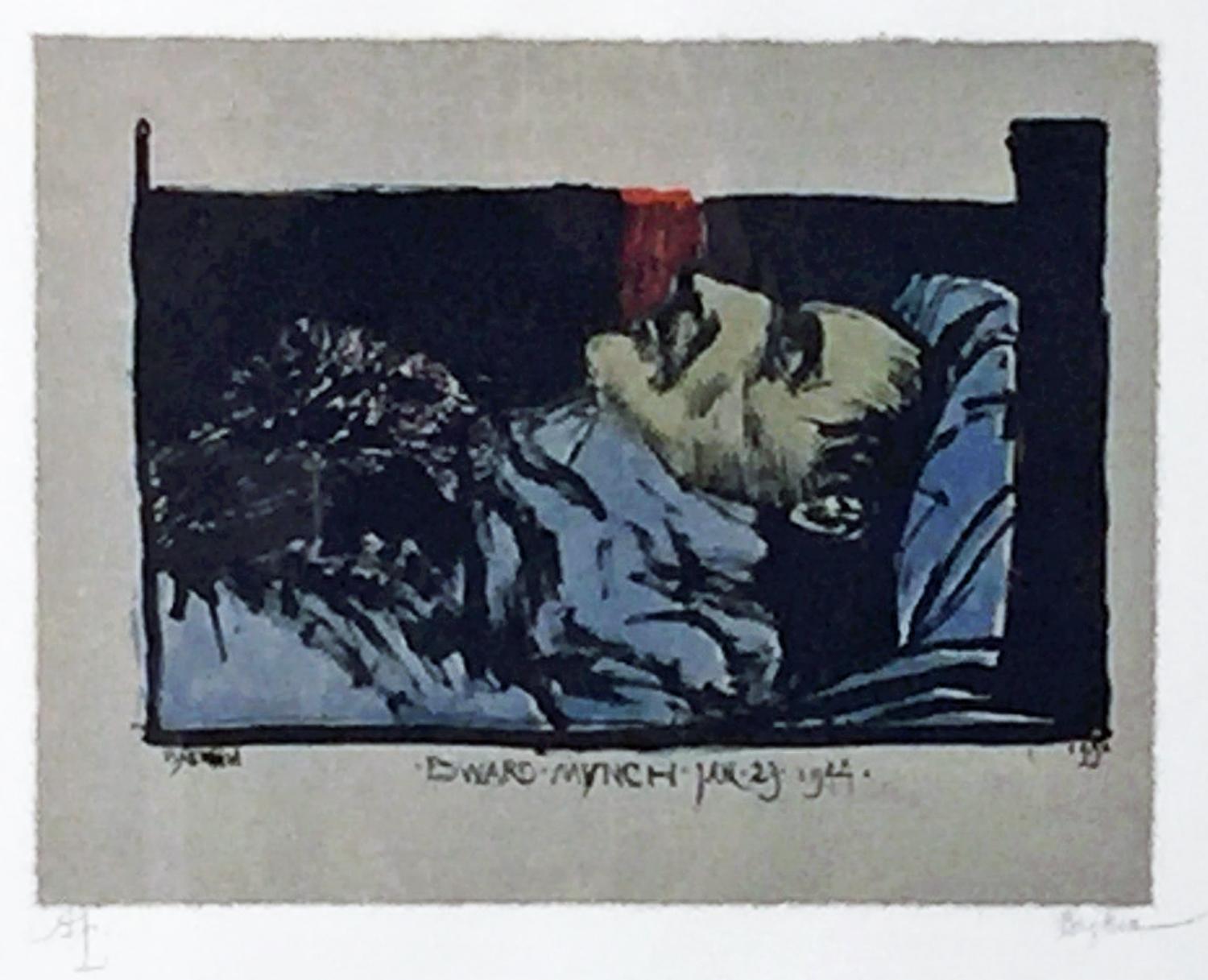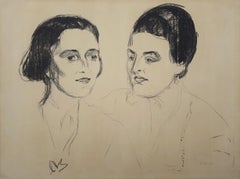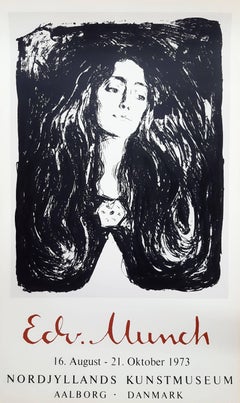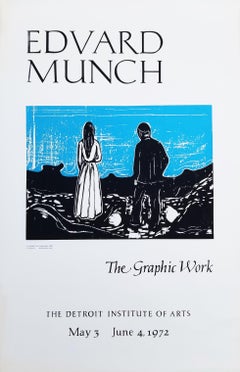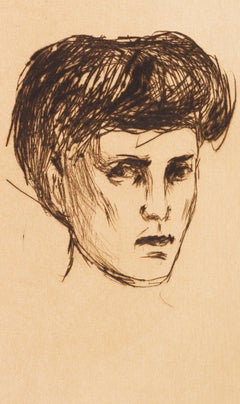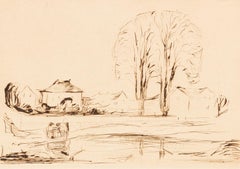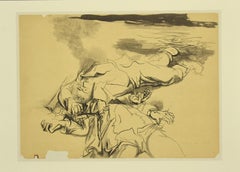Artist: Hermann Max Pechstein (German, 1881-1955)
Title: "Weib Vom Manne Begehrt (Woman Desired by Man)"
Portfolio: Deutsche Grapiker der Gegenwart (German Printmakers of Our Time)
*Unsigned edition
Year: 1919, (published 1920)
Medium: Original Woodcut Engraving on cream wove paper
Limited edition: 500, (there was also a signed and numbered edition of 30)
Printer: Unknown
Publisher: Klinkhardt & Biermann, Leipzig, Germany
Reference: "Das Graphische Werk Max Pechsteins" - Krüger No. 224; Fechter No. 157; Rifkind No. 2252; Söhn I, page 108-114
Framing: Recently beautifully framed in a modern gold moulding with 100% cotton rag matting and Museum Glass
Framed size: 19.69" x 16.13"
Sheet size: 12.75" x 9.5"
Image size: 9.88" x 6.25"
Condition: One small skillfully repaired tear lower left in margin. It is otherwise a strong impression in excellent condition
Notes:
Provenance: private collection - Kiel, Germany. Comes from the 1920 "Deutsche Grapiker der Gegenwart (German Printmakers of Our Time)" portfolio of fifteen lithographs, eight woodcuts, eight reproductions, and one lithographed cover by various artists. The artists who contributed to this portfolio were George Grosz, Ernst Barlach, Lovis Corinth, Richard Seewald, Heinrich Campendonk, Erich Heckel, Otto Mueller, Karl Schmidt-Rottluff, Lyonel Feininger, Conrad Felixmüller, Max Unold, Karl Caspar, Max Lieberman, René Beeh, Adolf Ferdinand Schinnerer, Ludwig Meidner, Max Beckmann, Richard Seewald, Käthe Kollwitz, August Gaul, Rudolf Grossman, Alfred Kubin, and Paul Klee. This very same work is within many permanent museum collections including the Museum of Modern Art, New York, NY.
"Deutsche Graphiker der Gegenwart (German Printmakers of Our Time)" brings together woodcuts, lithographs, and reproductions by thirty-one artists representing a cross-section of styles from Impressionism to Expressionism, uniting under a single cover works ranging from naturalistic self-portraits to left-wing political caricatures. It features works by artists associated with the Berlin Secession (an exhibiting society comprised primarily of German Impressionists), with Expressionist groups like the Brücke and Der Blaue Reiter, and with the political Novembergruppe, as well as artists like Max Beckmann who were not affliliated with any group.
In his introduction, art historian Kurt Pfister identified Expressionism as the leading force in German art at the time, while stressing the plurality of approaches to style and subject matter that the movement encompassed. Pfister emphasized the openness of German artists to foreign sources, and cited the importance of Paul Cézanne, Edvard Munch, and Pablo Picasso as well as Japanese, Indian, African, and Gothic art for the development of German art. There was a fifty-year difference in age between the oldest artist, Max Liebermann, and the youngest, Conrad Felixmüller, featured in the collection. The volume also included Lyonel Feininger, an American who had lived in Germany since 1896, as well as Austrian artists Oskar Kokoschka and Alfred Kubin.
Biography:
Pechstein was born in Zwickau, the son of a craftsman who worked in a textile mill. Early contact with the art of Vincent van Gogh stimulated Pechstein's development toward expressionism. After studying art first at the School of Applied Arts and then at the Royal Art Academy in Dresden, Pechstein met Erich Heckel and joined the art group Die Bru¨cke in 1906. He was the only member to have formal art training. Later in Berlin, he helped to found the Neue Sezession and gained recognition for his decorative and colorful paintings that were lent from the ideas of Van Gogh, Matisse, and the Fauves. His paintings eventually became more primitivist, incorporating thick black lines and angular figures.
From in 1933, Pechstein was vilified by the Nazis because of his art. A total of 326 of his paintings were removed from German museums. Sixteen of his works were displayed in the Entartete Kunst (
Degenerate Art...
